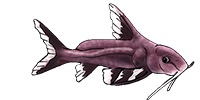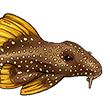Dear "Neoncory" and "Apistomaster",
I think the problem with Sterbai is that they are fairly easy to breed, but much more difficult to raise. Here in Czech republic, I don't know many people, who would breed Sterbai massly. Usually, you will see ca. 300 pieces a week in the offer in the wholesale, much less a number than e.g. 10 000 paleatus, aeneus or panda. They are very difficult fish for mass breeders, because they need big care. I know one experienced Corydoras-breeder, who just started to breed them, and he reports ca. 75% loses. No wonder that many people can't stand such beginnings and simply fall-off. You will be probably surprised, but many Czech shops depend on the import of Sterbai from South Asia, because they have no own Czech suppliers. I am actually alone here in South Moravia, so I have a price monopoly and I am still cheaper than the South Asian import

Basically, during the first days you must avoid pollution of the water. I usually hatch the fry in a small container, with the density of 50 pieces/5 Liter water. I start feeding with live artemia 3,5-4 days since hatching and change 80% water twice daily. All uneaten remains must be removed. If the number of fry is small (below 20-30 pieces), feeding with live artemia must be very careful, because too many artemia thrown into the container can lead to overfeeding. Artemia mustn't be also combined with any other food, because it leads to the same result. A good alternative can be decapsulated artemia, but one must at first check, if the fry eat it. And, of course, the demands on the cleanness of the tank are higher. I have no experience with microworms.
After ca. 14 days, the above mentioned density of fry is no longer sustainable and the fish must be removed into a bigger tank. The tank mustn't be too large (otherwise the fry won't find food) and must be already established for 2-3 weeks, with working bacteria cultures in the filter sponge. I always wondered, why I lose fry after removing them into a bigger tank, despite almost neurotic attempts to keep the tank clean. The mystery was solved, after I bought a NO2-kit and started to measure water chemistry. The NO2 concentrations can rise up to 0,30 mg NO2/L during the first 2 weeks! However, loses occur only if NO2 concentration gets close to 0,25 mg/L. In this bigger tank, you can still feed with live artemia, and when the fry are too big, you can use decapsulated artemia, finely chopped bloodworms, daphnia, cyclops, grated beef heart. I never use tubifex - as many other Czech breeders do. The Sterbai are namely extremely sensitive to diseases - in fact, they seem to have almost no immunity, when they are young. You must even use plankton from safe sources, because even in frozen plankton, there can survive some resistant spora, with which the little fry can be easily infected. I also avoid all sorts of commercial flours or granules, because they contain a highly concentrated protein, and the uneaten remains are thus a very rich source for the breeding of dangerous Flavobacteria that cause the inflammation of Corydoras-gills. Some flours can also cause heavy swelling.
Before every feeding, I turn the filter on in full output for several hours, which removes all unaten remains from the bottom. I also wash the filter sponge every 1,5 day. With this procedure, loses should be almost zero. However, from time to time, some pieces die, because they eat too much food and will strangle with it. They usually heavily breathe at the surface, and the next day hang there dead, with the belly upward. It usually follows the feeding with bloodworms, but it occurs virtually after every food. Many times I tried to avoid it, but with no definitive success. So I gave it up and I resigned to that I wouldn't have 0% loses

(Well, I didn't experience it after feeding with tubifex or with some granulas, but they have other disadvantages.)
My fry reach 3 cm after ca. 5 months. Some breeders report that their Sterbai can be sold after mere 3-3,5 months, but this is probably due to feeding with tubifex and frequent daily water changes that stimulate fish metabolism. Since I change 80% water every 5 days, this is not my case.
I must also add that with this "safe system", when a high percentage of fish survive, I get some percentage of degenerated or simply ugly fry. Certainly, they are not useful for breeding, so I either kill them or give them to my customers for free

But I must also say that these degenerated fish are not always the least sturdy; in fact, if some things don't go "normally", I lose many "good" fish, but these miseries often survive.




